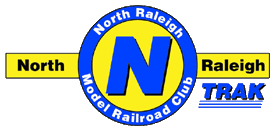This page has moved permanently. If you are not redirected automatically, follow the link to https://nrmrc.org/dcc/definitions
 |
Digital Command Control |
 |
DCC "Friendly" Definitions | ||
|
| ||||||||||||||||
Reference: "DCC Readiness: Comprehensive Decoder Installation Standards," by Ron Beardon, N-Scale Magazine, November/December 2006, P. 47. | |||||||||||||||||
![]()
A locomotive that is purchased with a decoder already installed.
|
The term Plug-and-Play (PnP) comes from computer usage. Plug a device into a computer, the computer will install the necessary software drivers and the device can be used within a very short time. This idea can also be applied to installing DCC decoders in locomotives. |
A DCC Ready locomotive is a close cousin of the PnP locomotive in that a ready-made decoder slips into the chassis, but in this case some disassembly is required. Note that in the PnP definition no disassembly at all is required.
|
Even though there is no decoder that merely plugs in, installation is fairly easy. In many cases the motor is already or easily isolated from the frame, and all the needed wires are fairly easy to get to. Some trimming and soldering of wires will probably be necessary, but there will be no cutting or milling of the frame required.
|
You can install a DCC decoder into a DCC capable locomotive, but it is going to take some work. The work may require cutting metal, routing wires and soldering. It will always require isolating the motor from the frame, which may not be quick and easy.
|
Two companies produce products that help with installing a decoder in old locomotives with a split metal frame. Such locomotives would be considered DCC Capable in our definitions above since a good deal of frame cutting is required. Atlas, Life-Like and Kato use Zinc alloy frames that are very tough to cut.
|
Copyright © 1997–2009 North Raleigh Model Railroad Club. All rights reserved.
|
North Raleigh Model Railroad Club |